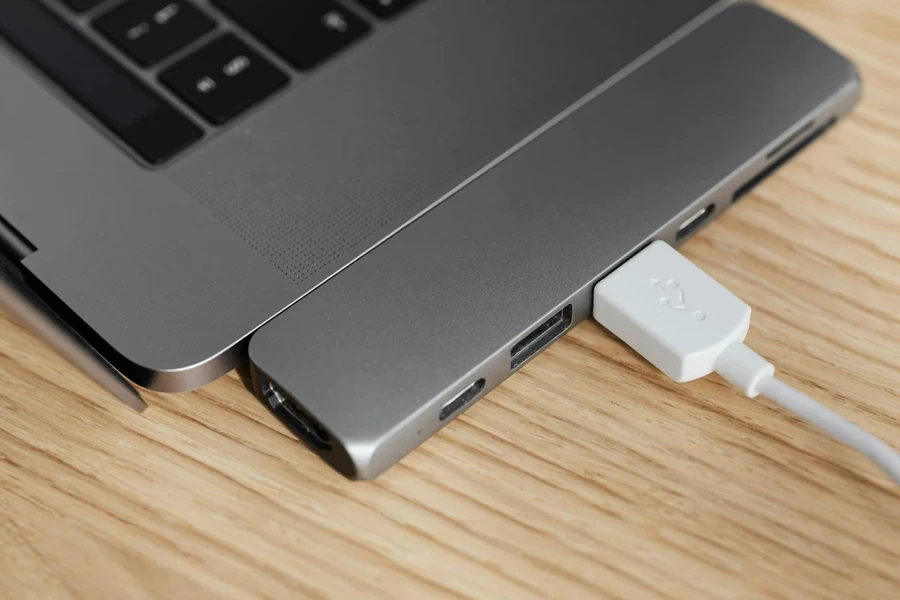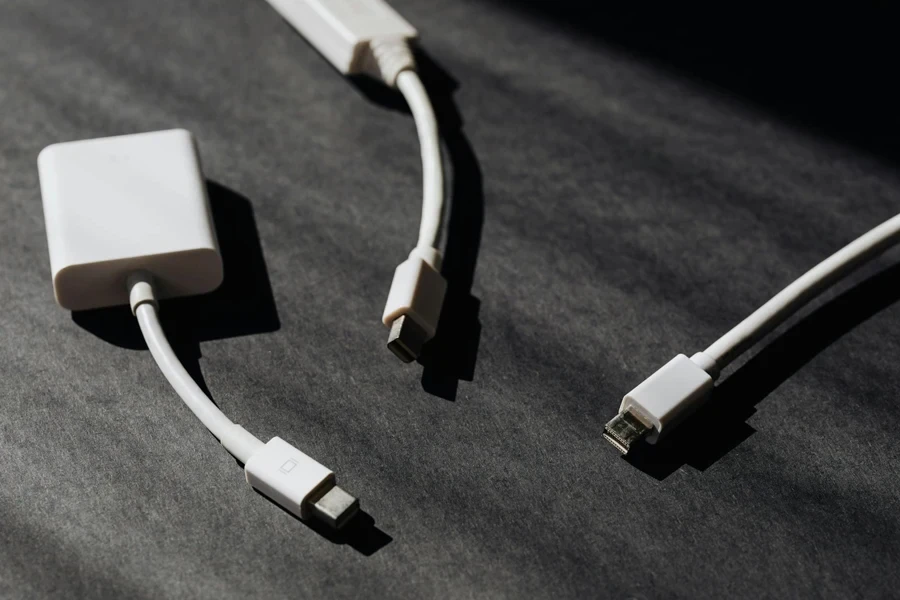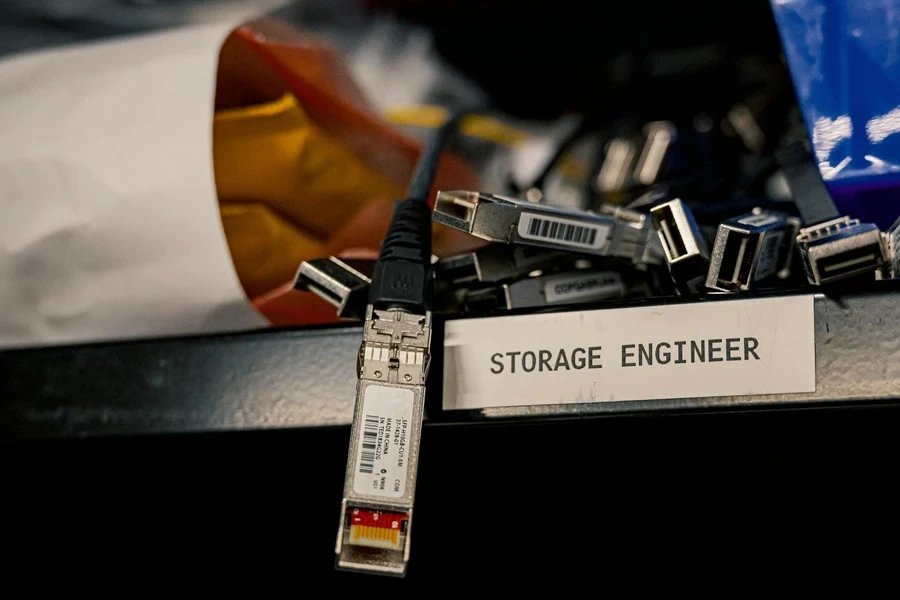Table of Contents
● Introduction
● Market overview
● Technical specifications and types
● Things to consider when selecting USB cables
● Conclusion
Introduction
Navigating the vast landscape of USB cables requires a keen understanding of their technical specifications and the ability to match these with the needs of an organization. From ensuring device compatibility to optimizing power delivery and data transfer speeds, the selection process is crucial for maximizing operational efficiency and durability. Additionally, factors like sustainability credentials and compliance with global standards play an increasingly important role in decision-making. As technology progresses, staying updated on the latest developments in USB cable innovations becomes vital. This knowledge empowers business professionals and online retailers to make informed, strategic purchasing decisions.
Market overview
Current market scale and projections

The global USB cable market has demonstrated robust growth over the past decade, a trend that is projected to continue into the next. According to Allied Market Research, the market was valued at $12.73 billion in 2021 and is expected to ascend to $69.86 billion by 2031, illustrating a significant compound annual growth rate (CAGR) of 20.24%. This surge is primarily fueled by the escalating demand for consumer electronics that require reliable and efficient charging and data transfer solutions.
Key market drivers
Several key drivers are propelling this market expansion. Advancements in USB technologies, such as the development and standardization of USB-C and the introduction of USB 4, are making these cables more versatile and faster, which enhances their appeal across various consumer and industrial sectors. Moreover, the increasing integration of USB ports in automotive applications and the burgeoning number of data centers worldwide are significant contributors to market growth.
Challenges and restraints
The USB cable market faces its set of challenges. Security concerns, primarily the risk of data breaches through physical connections, pose substantial hurdles. These vulnerabilities necessitate ongoing innovations in cable technology and security protocols to mitigate risks and assure end-users of the safety and reliability of their USB connections. This dynamic between driving forces and market restraints shapes the current and future landscape of the USB cable industry, necessitating continuous developments to meet evolving consumer demands and security standards.
Technical specifications and types
Overview of USB versions

The evolution of USB standards over the years has significantly enhanced their data transfer capabilities. USB 1.1, an early version, supports data transfer rates up to 12 Mbps, which was suitable for basic peripheral connections like mice and keyboards. USB 2.0, a subsequent improvement, increased this rate to 480 Mbps, making it viable for more intensive tasks such as audio and video applications. The most advanced of these, USB 3.0, boosts the data transfer speed to an impressive 5 Gbps, which caters effectively to high-speed data storage solutions, video streaming, and fast data synchronization between devices.
Application-specific cable types
USB cables have diversified to meet the varied requirements of different applications. For personal use, such as charging phones and data transfer between small devices, USB Type-A and Micro-USB cables are commonly used. In industrial settings, where durability and reliability are paramount, cables are often reinforced with stronger materials and may include locking mechanisms to prevent accidental disconnections. These industrial USB cables are designed to withstand harsh conditions and provide reliable connectivity for equipment like scanners, printers, and complex manufacturing machinery.
Innovations and future trends
The USB technology landscape is continuously evolving with significant innovations that promise to redefine connectivity standards. According to GlobalSpec, the advent of USB Type-C has marked a significant milestone due to its reversible connector design and the ability to carry higher power loads and transfer data at faster speeds. Looking ahead, the emergence of USB 4 is set to further revolutionize this space with capabilities to support up to 40 Gbps data transfer rates, which is double that of USB 3.2. Moreover, USB 4 integrates support for Thunderbolt 3 technology, enhancing video output and charging capabilities. These advancements are likely to fuel the development of more robust and versatile USB solutions, catering to an ever-expanding array of electronic devices and industrial applications.
Things to consider when selecting USB cables
Matching device compatibility and connector types

The selection of USB cables must consider the compatibility of connector types with targeted devices. USB cables are distinguished primarily by their connectors: Type-A, Type-B, and Type-C. Type-C has become increasingly prevalent due to its reversible design and uniform application across various platforms, from smartphones to laptops. It is crucial to match the USB cable to the device’s specifications to ensure optimal functionality. For instance, USB Mini-B connectors are often used with digital cameras, while Type-C is suited for newer smartphones and laptops that support faster data transfer and charging capabilities.
Optimizing charging power and data transfer speeds
Choosing a USB cable also requires understanding its power delivery and data transfer capabilities. According to Syllucid, USB 3.0 and USB 3.1 cables can facilitate super-speed data transfers up to 10 Gbps, which is critical for high-stake environments that manage large data volumes. On the charging front, the USB Power Delivery (PD) specification enhances the charging speed significantly, supporting up to 100W on compatible devices. This technology not only speeds up the charging process but also allows a single cable to charge laptops, tablets, and other high-power devices efficiently.
Ensuring durability and environmental sustainability
Durability and sustainability are key factors in USB cable selection. Good quality cables often feature braided nylon or reinforced aluminium shielding to resist physical wear and extend their lifecycle. Syllucid emphasizes the importance of materials that contribute to sustainability, such as recyclable plastics and metals, which help reduce the environmental footprint. Additionally, choosing cables that are designed with longevity in mind can decrease electronic waste and promote sustainability within technology ecosystems.
Navigating certifications and standards

Certifications like RoHS (Restriction of Hazardous Substances), CE (Conformité Européenne), and FCC (Federal Communications Commission) are crucial in determining the safety and quality of USB cables. These certifications ensure that the products meet environmental and health standards by limiting the use of hazardous substances. For example, RoHS-compliant cables are free from lead, cadmium, and other dangerous chemicals, making them safer for both users and the environment. Compliance with these standards not only supports global sustainability efforts but also ensures device safety during operation.
Conclusion
Staying informed about the latest USB cable technologies and market trends is crucial for business professionals and online retailers tasked with making strategic purchasing decisions. As USB standards continue to evolve, offering faster data transfer speeds and more robust power delivery options, understanding these developments can significantly impact the efficiency and functionality of technological investments. By keeping abreast of new innovations and regulatory changes, businesses can ensure they select USB cables that not only meet current technical requirements but are also future-proofed against upcoming advancements, thus optimizing both performance and cost-effectiveness in their operational frameworks.



